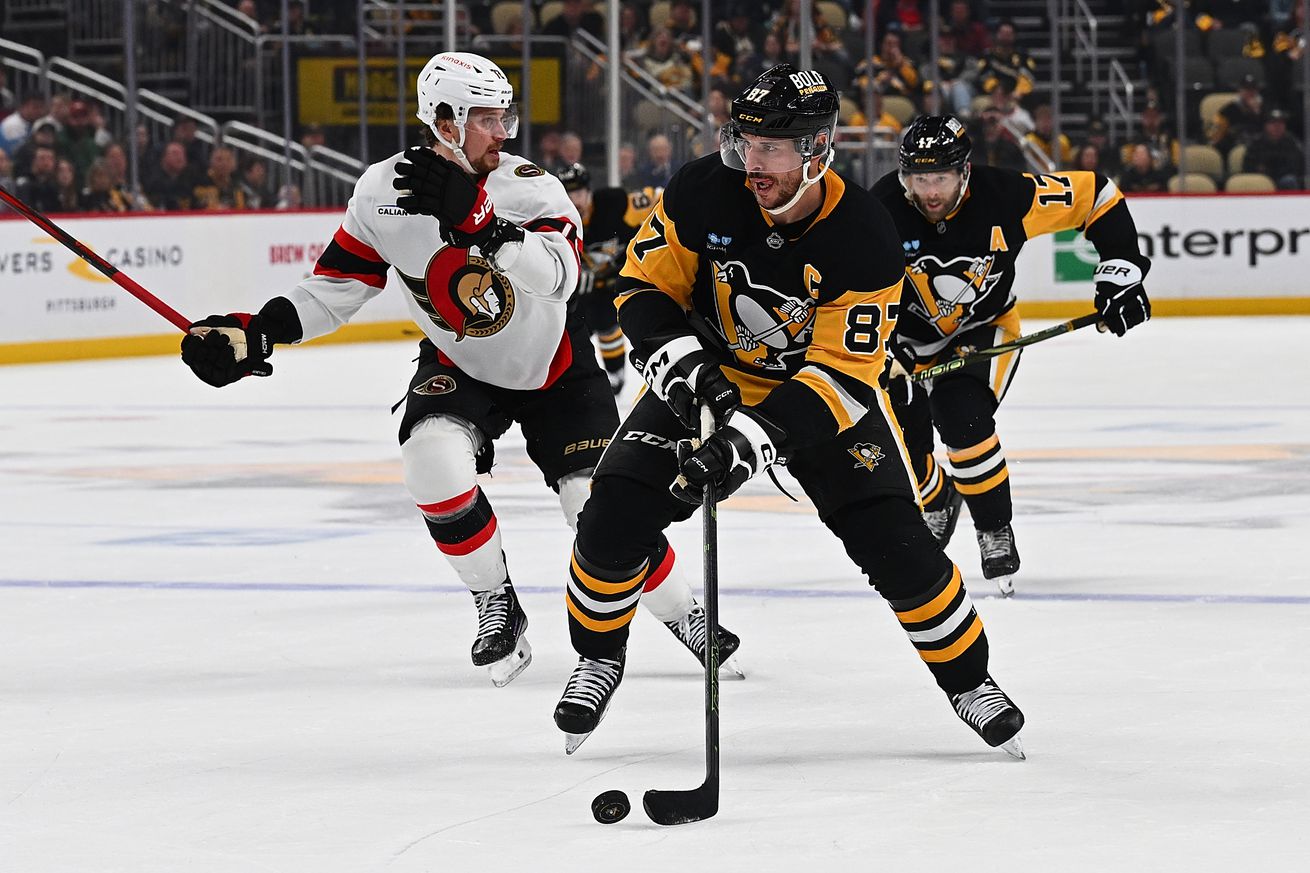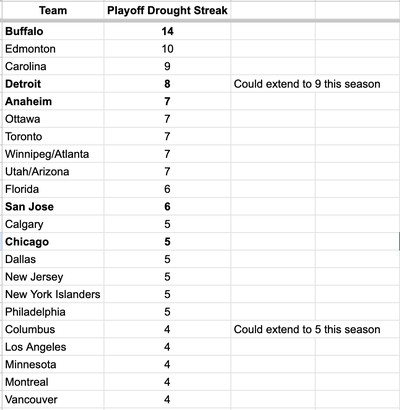
It could be another year or two at least, but it should not be more than that.
Having officially missed the playoffs for the third consecutive season, we can now say that the Pittsburgh Penguins are in a postseason drought. This is relatively uncharted territory for the organization, as this season is just the eighth time since 1990 that it has missed the playoffs.
It has been a pretty great run.
It is also only the second time over that stretch they have missed three seasons in a row, joining also the period between the 2002 and 2006 seasons.
Not all of those seasons are created equal.
Back in the 2002-2006 era, that was a team dealing with devastating financial hardships, going through a massive teardown rebuild, and waiting for the league to implement a salary cap. It was a grim time, but with each top pick in the draft the optimism gradually started to grow.
During the 2022-23 and 2023-24 seasons the Penguins were clearly still in a win-now mode, but simply constructed flawed rosters with serious Achilles heels that held them back.
This season seemed to be something else entirely, and we should have seen the signs coming in the offseason when the only moves were signing players like Anthony Beauvillier and Matt Grzelyck to one-year deals, and taking on contracts (Kevin Hayes, Cody Glass) to start accumulating future draft picks.
Pretty much every move made since the 2024 trade deadline has been centered around the future.
As a whole, they have added a lot of young talent and future assets into the organization.
Rutger McGroarty and Ville Koivunen look like legit prospects and are making a strong first impression in the NHL. They should be fixtures in the lineup starting next season. Their presence has significantly boosted the state of the farm system.
Sergei Murashov, Harrison Brunicke and Owen Pickering are all intriguing prospects to some degree, with Murashov being the one guy out of everybody mentioned here that could rapidly change the team’s short-term outlook if everything breaks right with him and his development.
Nothing changes a team quite like a goalie can.
They have (as of now) 30 draft picks over the next three years, including several within the first two rounds of those classes. Along with their own first-round picks, they also have a wildly intriguing New York Rangers pick in one of the next two years.
There are some things to be hopeful and encouraged about.
But the team itself, as currently constructed, has a lot of flaws and is very bad.
You also have to accept the reality that not every prospect you have is going to pan out. You hope McGroarty and Koivunen become consistent top-six scorers. Maybe only one of them does. If even five or six of those 30 draft picks (assuming they make them all and do not trade any) turn into productive NHL players, you’ve probably done well for yourself. Those are just simply the odds with draft picks.
Whether you want to label this a full-scale rebuild, a re-tool, or something else in between those two labels, it is probably not going to be an immediate turnaround. At least not next season. Maybe not even the season after that.
I took a quick look around the NHL and looked at the longest playoff drought for every NHL team in the salary cap era (starting with the 2005-06 season).
Excluding Vegas and Seattle (just because they are so new), 23 of the other 30 NHL teams have had at least one playoff drought of four years or more.
The only teams that have avoided that to this point are Colorado, Pittsburgh, St. Louis, Tampa Bay, Boston, Nashville, New York Rangers and Washington.
In the Lightning and Rangers cases, Tampa Bay had one playoff appearance after a three-year drought, then followed it with a two-year drought before going on its current run of extended dominance.
The Rangers made the extended playoff field in 2019-20 after missing the playoffs two years in a row, then missed the playoffs again in 2020-21. Under normal circumstances they probably would have had a four-year drought of their own.
Boston, Nashville (?!) and Washington are the only non-expansion teams that have mostly avoided extended down periods with playoff droughts of two years or less. Though, I do anticipate that Boston’s time has arrived. That team STINKS.
Here are the longest playoff droughts in this time period, with teams listed in bold currently dealing with active playoff droughts.

A couple of things to keep in mind here:
- At some point, pretty much everybody goes through this. After nearly two decades of success and being the best organization in hockey, the Penguins were eventually going to have to deal with it. That time is now.
- A playoff drought does not mean a team was rebuilding that entire time. We are seeing that with the Penguins right now. Even though they have missed the playoffs three years in a row, you could make the argument this is only the first year of a rebuild. Chicago’s playoff drought is at five years, but for two of those years they were very clearly still trying — and failing — to win. Buffalo thought it had come out of a rebuild at least once during its drought before scrapping it all and starting over.
- A lot of the longest, most extended droughts came from teams that tore it down to the studs (Buffalo, Ottawa, Detroit, Anaheim …. I would imagine San Jose joins that group relatively quickly over the next two years), while also having poor roster construction and asset management along the way.
At this point we still do not truly know what the Penguins are planning on here, beyond the reality that Sidney Crosby and Evgeni Malkin are going to play out their careers with the Penguins.
It seems likely that Erik Karlsson gets traded at some point over the next two years. Maybe even the next few months.
Kris Letang might?
Bryan Rust and/or Rickard Rakell could.
I still look at the relatively quick turnarounds of the Kings, Rangers and to a lesser extent the Capitals (who did not even actually rebuild) as examples the Penguins could reasonably follow. Though, in the Rangers case you want to simply do it better and not be totally dependent on one guy to lift your franchise.
While they do have some bad contracts on the roster, one of them (Karlsson) is still fairly tradable, while they also have the benefit of a rapidly rising salary cap situation.
Even with Karlsson, Tristan Jarry and Ryan Graves under contract they still have over $25 million in salary cap space this offseason, $54 million in 2026-27 and $87 million in 2027-28. That is a lot of flexibility.
Having too many bad contracts and too much dead money was a huge issue for a team like Detroit in its attempt to dig out of its mess. The Penguins, for the most part, do not really have much of that.
A lot of it, however, depends on what kind of luck they get with the development of their top prospects and what sort of luck they get in the draft lottery.
If Murashov is as good as he has looked so far in North America, that can immediately raise your floor.
If the lottery balls go your way this year and/or next year and bring you a top-tier talent, that also certainly helps the timeline (the Rangers and Kings had that happen for them without every truly bottoming out in the standings).
They need some things to go their way. But they seem to have a good management team in place, they have some legitimate prospects, and they have flexibility under the salary cap to add and add quickly in the coming seasons (even if it is not this summer). You should still probably anticipate at least one more, and maybe two more, years like this. If it goes beyond that, however, things have probably gone very wrong somewhere along the line.
I do have some questions about the NHL-level scouting, but Dubas and Co. have mostly managed resources and assets extraordinarily well from a big-picture outlook. That is important. Now we get to see how they can actually build this out.